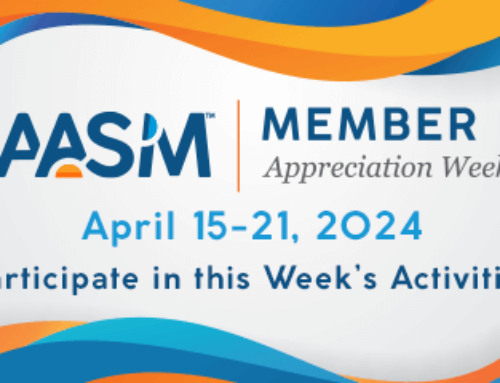In San Antonio, Texas, on Monday, June 10, 2019, Amita Sehgal, PhD, presented the keynote address, “Using Small Animal Models to Determine How and Why We Sleep,” at SLEEP 2019, the 33rd annual meeting of the Associated Professional Sleep Societies (APSS). She is the John Herr Musser professor of neuroscience in the Perelman School of Medicine at the University of Pennsylvania, where she is the director of the Chronobiology Program.
The SLEEP annual meeting is a joint venture of the American Academy of Sleep Medicine (AASM) and the Sleep Research Society (SRS). The plenary session keynote address by Dr. Sehgal officially kicked off the scientific program, which included more than 1,000 research abstract presentations and more than 90 sessions focused on clinical sleep medicine and sleep and circadian research. Watch the full-length video of Dr. Seghal’s 49-minute lecture.
According to the Sehgal Lab website, her research seeks to understand the molecular and cellular networks that drive behavior, in particular rhythmic behaviors such as sleep. Her studies are done largely with the fruit fly, Drosophila melanogaster, but her research team also translates findings to mammalian models, especially mice. The major goals are to elucidate the mechanisms that confer a circadian (~24-hour) periodicity on much of behavior and physiology as well as understand how and why the drive to sleep is generated.
Circadian (~24-hour) clocks endogenous to most organisms drive daily rhythms of sleep and wake and of most physiological processes. Any kind of desynchrony between endogenous clocks and the environment, as is caused by travel to a different time zone or by shift work, results in a multitude of physiological disturbances. Likewise, sleep disruption, which is common in modern society, results in severe metabolic and cognitive deficits.
Dr. Sehgal’s research has provided insight into mechanisms of the circadian clock, how clocks synchronize to light, and how clocks interact with body systems to drive rhythms of behavior and physiology. Building upon a Drosophila model for sleep that they developed several years ago, her research team also has identified genes and circuits that underlie the homeostatic drive for sleep. Ongoing studies are revealing new mechanisms and cellular functions for sleep. Together their studies are providing a comprehensive understanding of how internal clocks drive body rhythms, how and why a sleep state occurs, and the extent to which clocks and sleep impact general physiology and aging.









